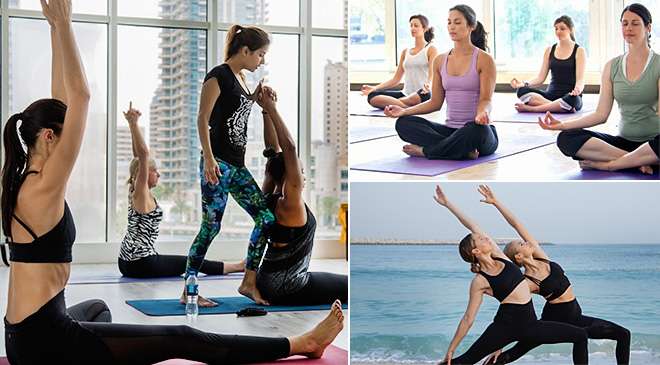It is an ancient practice rooted in Indian philosophy. Yoga, which is important to Hinduism and Buddhism, involves certain types of movements using different motions believed to be important in achieving physical, mental and spiritual wellness. Many people think of it is a religious practice, when it is not. Although yoga attempts to unite one’s soul with one’s surroundings, it is in fact a scientific approach to achieving physical and spiritual discipline.
Much of yoga’s practice has to do with posture and breathing, or the realignment of the body, combined with meditation. If a person practices yoga regularly, he will find that with the right movements and breathing, an awakening should also take place within his psyche. Hence, while yoga attempts to tone a person’s body muscles, it also attempts to cleanse his frame of mind and the way he views life.
Why practice yoga? The simple answer would have to be that it makes a person feel a lot better – physically, emotionally and mentally. Those who have mastered yoga are said to manifest far greater tolerance with people and situations. They know how their body works and they use this knowledge efficiently. Yoga helps one become conscious of what will hurt the body and the mind, and employ ways to support or protect this.
Among the benefits of yoga include:
PHYSICAL • Cures fatigue • Cures headaches • Eases multiple sclerosis • Cures back pain • Helps alleviate high blood pressure • Relieves muscle pains • Improves muscles • Increases stamina • Improves circulation inside the body • Boosts immune system • Improves posture • Revitalizes internal organs
MENTAL/EMOTIONAL • Helps self esteem • Improves patience • Cleanses the mind from clouded judgments
• Boosts concentration • Boosts creativity • Helps relieve stress • Gives you discipline Types of Yoga
The practice of yoga involves many types. It has a total of eight methods, each unique and independent of each other.
• Abstinence (yama)
• Observance (niyama)
• Posture (asana)
• Breathing regulation (pranayama)
• Sense withdrawal (pratyaha)
• Attentiveness (dhyana)
• Contemplation (dharana)
• Concentration (Samadhi)
Today, yoga practice still involves elements rooted in ancient tradition and principles. Instructions are made by “gurus” who provide “mantras” to the students, while they are doing their breathing exercises.
Yoga postures have to be learned slowly. Forcing someone to do the movements when he is not yet ready might leave him easily fatigued and could cause adverse results.
These are some of the postures done in yoga:
• Lying down
• Sitting down
• Standing up
• Bending forward and backward
• Twisting
• Inverted position
Each position is required to be held for a couple of minutes while the person is also doing breathing exercises and meditation. Meditation concentration may differ among practitioners. Some concentrate on enhancing the third eye, while others concentrate on cleansing the “chakra” (heart). And some meditate to honor deity or attain inner peace.
Yoga must be practiced for a minimum of ten minutes daily; doing so helps keep the body limber and the mind clearer. Select an area where one can freely move and stretch comfortably, with no disturbances like TV or radio and loud answer phones or kids and pets. It is best to practice yoga barefooted wearing loose and relaxed clothing.
Treat yoga as a process you have to continually pursue. If you take longer to master this, have patience. This is where your persistency and discipline pay off, and the benefits you reap from doing this will be life-long.


